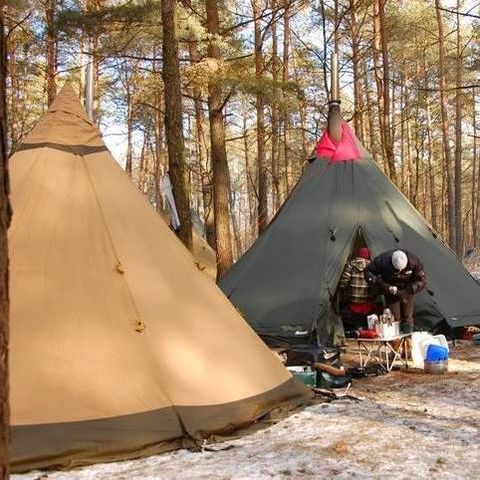


Around the world, deer are among the most popular game species for hunters, and since their populations are so large and they can be found in so many biomes, they remain the quarry of choice for those hunting with guns or bows.

This naturally leads to some consternation with animal lovers because deer are also considered charismatic wildlife.
They’re delicate, almost cautious, and are somehow adorable and regal at the same time.
But have you ever stopped to consider that the hunters might become the hunted? Is it possible that deer are dangerous to humans?
Yes, deer are dangerous because they cause hundreds of fatal car accidents every year. They’re also a menacce when on foot, and can inflict significant injuries by kicking or by goring with their antlers.
However you might feel about deer, and whatever interactions you have with them, you need to give these wild animals the respect that they sometimes lack.
They are large, athletic and powerful animals and more than capable of inflicting serious injuries on people, or even killing them.
Believe it or not, a couple of people die every single year due to close combat with these forest dwellers. I’ll tell you everything you need to know about dealing with deer below…
Deer can be found all over North America, and most typically they reside in forested areas or plains and Meadows that border forests.
From the southernmost reaches of the United States all the way up to and through Canada, deer are among the most plentiful and successful indigenous wild animals, and various deer species are also plentiful elsewhere around the world…
And however much hunters might love them, deer don’t return the enmity; they are really only concerned with staying alive, finding enough food and finding a mate. That is really all there is to it.
And as it turns out, mating season actually affects many of our own interactions with deer.
When deer are sexually mature and mating season draws close, competition between males will begin, precipitated by the growing of large and impressive antlers that are coveted by trophy hunters of the world over.
These antlers are basically bone spikes and work accordingly in combat.
Because of the pressures of mating, territoriality increases greatly, and the bucks are absolutely surging with testosterone.
This naturally leads to them to fight with other males continually and also to protect their own territories, but this rise in aggression can also lead to them attacking people.
Even after mating season, your worries aren’t over. Although typically pictured as purely gentle and innocent creatures, does might fight viciously to protect their fawns, and they have attacked people likewise.
Just because deer are common does not mean they aren’t dangerous, and if you get too close to one you’ll find out the hard way.
Yes. Male deer, or bucks, are particularly territorial. They are downright vigorous in protecting their territory during the rut, or mating season.
This can manifest in a variety of ways, from posturing and sparring to open combat with their antlers.
But even after the rut is over, deer may still protect their territory if they feel threatened by humans encroaching on it.
Deer are known to be illusive, almost shy, in their behavior when they sense the slightest thing wrong or out of place, but they do not always retreat!
Yes, they do. During mating season, bucks can become quite aggressive when competing for mates.
This is especially true of mature adult males that have enjoyed long years of success and supremacy.
Younger bucks have more to prove, but often yield to older bucks still in their prime. In all cases, males that have antlers will use them to battle with other males in order to claim territory or a particular mate.
They can, though this is thankfully rare. A male that is fiercely territorial might see a person as an interloper and challenge them, or just act uncharacteristically aggressive toward anything it sees as a challenger or threat.
Those impressive antlers are not just for show! Likewise, a female protecting her babies might attack if she feels that they are in danger, and especially if surprised at close range.
In either case, the potential for injury is real and it should be taken seriously. In order to avoid any trouble with deer, it is best to give them plenty of space and not approach too closely.
It is also wise to make some noise if you are in an area with a lot of deer during the rut, so that they can hear you coming and, hopefully, avoid you.
Yes, quite a few, though they are few indeed if you remove “encounters” between people and deer as a result of automobile accidents.
There are around a dozen or so such encounters recorded yearly, and on average a little less than one death per year occurs as a result of direct interaction between people and deer.
As a rule, getting too close to any deer, or moving into the territory of an aggressive buck.
Every single year there are still a handful of deer attacks on humans that are on foot, usually as a direct consequence of hunting activity that sees people place themselves in relatively close proximity to a deer by choice.
In some other instances, people misguidedly try to feed or pet deer that might appear curious or friendly.
This is a mistake: deer have unpredictable reactions and should be left alone to go about their business in peace.
Deer that appear tame are almost certainly not, and some deer that seem friendly might be suffering from illness or injury that sees them act in ways counter to their typical behavior.
Again, these animals can and will react unpredictably.
Surprisingly strong. Deer are amazingly athletic creatures, capable of running at speeds of up to 35 mph (56 kmh), jumping heights of over eight feet and distances of nearly 30 feet, along with being adept swimmers.
Their antlers, as already mentioned above, can cause serious injury if a deer was to thrash you with them, and deer are also known to deliver powerful kicks. If you come to grips with a deer, you will find it easily able to overpower you.
Yes, they can, though they do not rely on their teeth for defense in the same way as other animals do.
Deer can bite, but are only likely to if they are taking food from you, or if they have no other means of defense.
A deer that attacks a human will typically charge in, either with its head lowered and antlers roughly parallel to the ground, or by rearing up on its hind legs to head butt or “flog” a person with repeated front kicks.
It might also kick with its hind legs if it has an opportunity, lashing out with its sharp hooves.
Being repeatedly thrashed by the strong, sharp antlers of a deer will rapidly inflict both blunt and penetrating trauma, and kicks or swipes from an adult deer can easily break bones.
Again, people have died from tangling with a deer, and they are not to be taken lightly!
The single best thing you can do is just to avoid getting close to the deer. If you notice any deer, and bucks especially, making coughing sounds and pawing at the ground, they are agitated.
Keep your distance, and in all cases keep something between you and the deer that will keep it from reaching you.
If the deer is charging, prepare to defend yourself, and take care to guard your head and neck especially. An antler tine to the throat or eye socket is going to put an end to you quickly!
Fight back if you can to prevent damage, and try to ward off the deer or else find an opportunity to make your escape.
No. Deer are entirely herbivorous, and will not eat people, even dead people.
Yes. Deer carry a variety of germs that can infect people, and also several parasites that are problematic.
The most known and most distressing of these diseases is Lyme disease, itself actually transmitted by ticks that infest deer.
If you come into contact with deer or are just in deer country take care to avoid any ticks and check yourself thoroughly afterwards.
 Like what you read?
Like what you read?
Then you’re gonna love my free PDF, 20 common survival items, 20 uncommon survival uses for each. That’s 400 total uses for these dirt-cheap little items!
Just enter your primary e-mail below to get your link:
We will not spam you.
- Advertisement -

 Watch this video on YouTube
Watch this video on YouTube Watch this video on YouTube
Watch this video on YouTube








